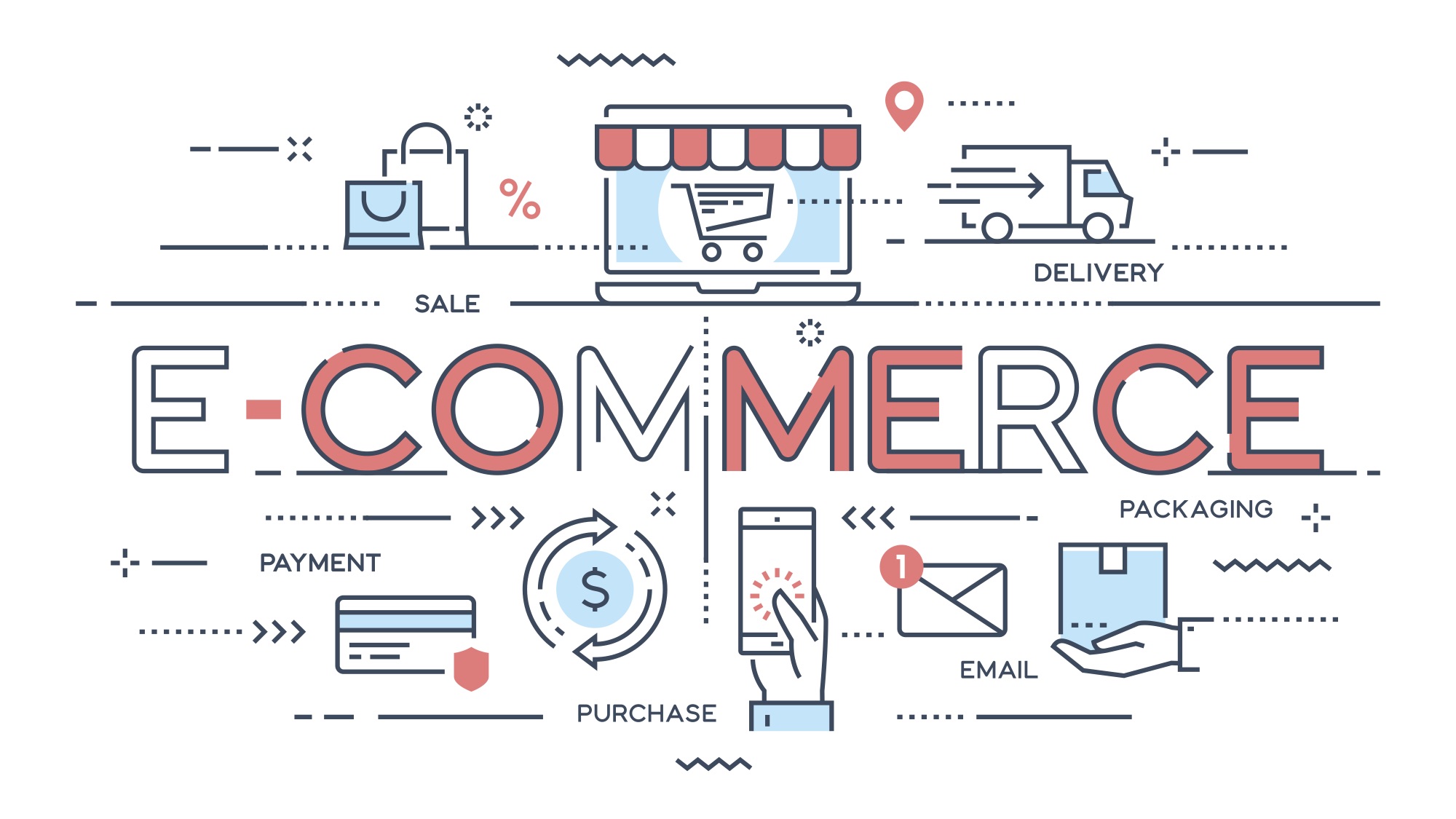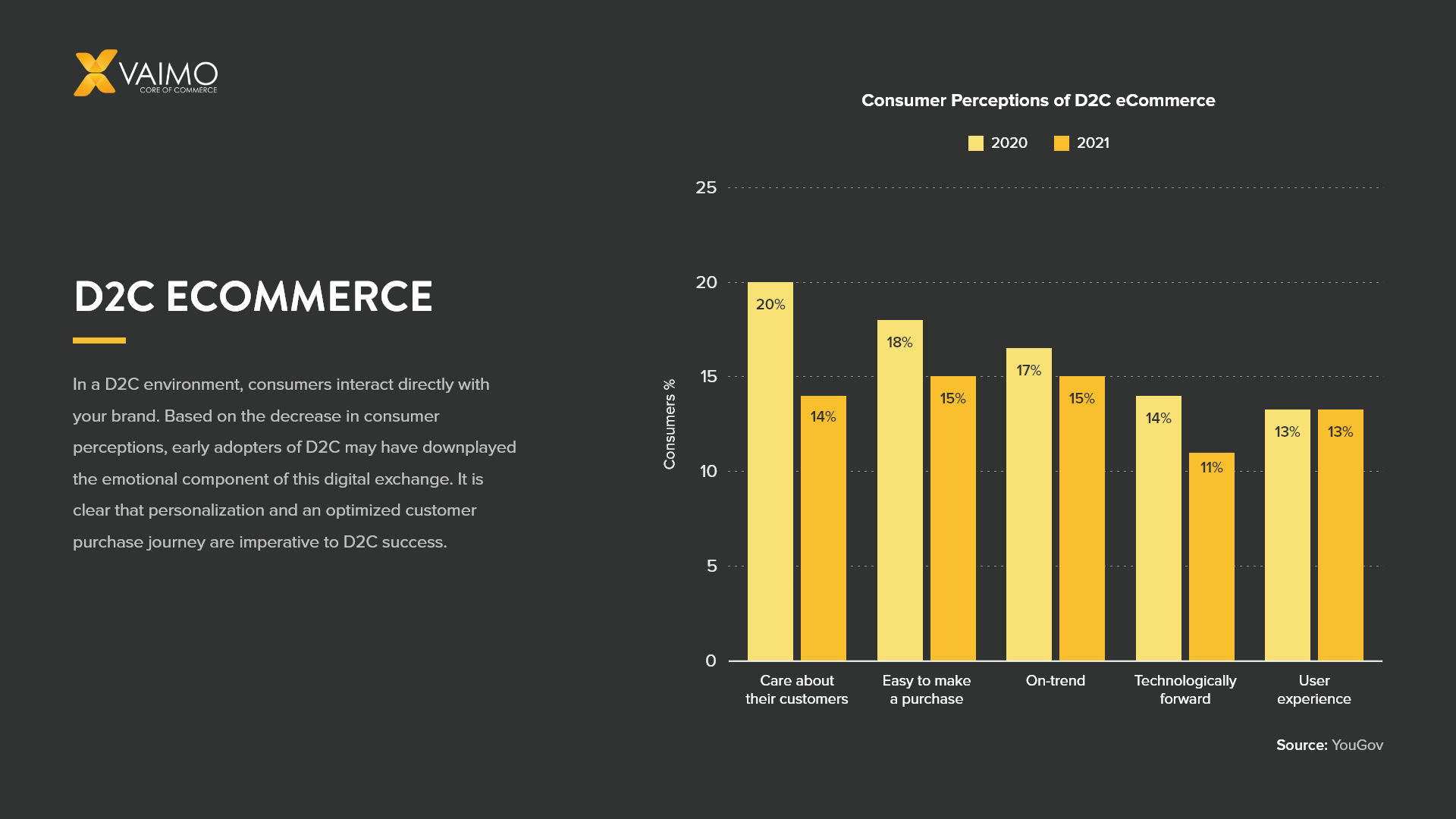How a D2C Ecommerce Agency Helps You Understand and Use Customer Data
Exploring the Prospective of D2C Ecommerce: A Comprehensive Guide for Businesses
The D2C ecommerce design offers a considerable change in how brand names involve with consumers. It enables firms to bypass standard retail channels, fostering deeper connections and potentially boosted revenue margins. Nonetheless, this strategy is not without its intricacies. Recognizing the subtleties of D2C ecommerce is vital for brands intending to thrive. What techniques can they take on to browse this advancing landscape efficiently? The solutions may redefine their organization techniques.
Understanding the D2C Ecommerce Model

Key Conveniences of D2C Ecommerce for Brands
The D2C ecommerce design supplies brand names substantial advantages, particularly pertaining to raised earnings margins. By eliminating middlemans, companies can keep a bigger share of sales income. Additionally, this straight relationship with clients cultivates improved brand commitment, encouraging repeat acquisitions and long-lasting interaction.
Boosted Earnings Margins

Enhanced Brand Commitment
Building on the economic benefits of D2C ecommerce, enhanced brand loyalty arises as one more essential advantage for companies involving straight with consumers. By developing a direct connection, brand names can foster much deeper relationships with their consumers, getting understandings into habits and preferences. This straight communication enables even more customized advertising methods, which reverberate strongly with customers. Furthermore, brand names have the possibility to control their messaging and customer experience, strengthening brand values and developing count on. When clients feel an individual connection, they are more most likely to return, support for the brand name, and get involved in community interaction. Eventually, improved brand name loyalty not just drives repeat purchases however additionally cultivates an enthusiastic client base, more solidifying a brand's position on the market.
Challenges Faced by D2C Brands
D2C brand names experience numerous considerable difficulties that can impact their success. Supply management issues can cause stock lacks or excess, complicating operations and client complete satisfaction. In addition, marketing budget plan restraints typically restrict the capacity to properly involve and reach target audiences.
Supply Administration Issues
Efficient supply management presents a formidable obstacle for many brand names operating in the direct-to-consumer (D2C) area. These brand names often face varying demand, which can result in overstock or stockouts, inevitably affecting customer complete satisfaction and revenue. In addition, the absence of sophisticated inventory radar can result in inconsistencies between real supply degrees and reported data, making complex order fulfillment. The varied series of items D2C brand names normally offer additionally makes complex inventory management, as variants in styles, shades, and sizes call for more thorough oversight. Additionally, lots of D2C businesses may deal with minimal warehousing capacities, causing inefficient use area and sources. Consequently, reliable stock management remains a vital hurdle for D2C brand names aiming for sustainable development and functional performance.
Advertising Budget Constraints
Maneuvering marketing budget restrictions is a considerable challenge for numerous direct-to-consumer (D2C) brand names. Minimal monetary sources typically limit these business' ability to spend in comprehensive marketing approaches, resulting in lowered visibility in a competitive market. D2C brand names frequently grapple with the demand to maximize roi (ROI) while targeting details audiences properly. This difficulty is aggravated by increasing costs in digital advertising and the need to allocate funds throughout several networks, consisting of social networks, search engines, and email advertising and marketing. Numerous D2C brands must innovate cost-effective marketing solutions, leveraging natural growth methods and influencer collaborations. Inevitably, efficiently navigating these budget plan restrictions is vital for sustaining growth and accomplishing long-term earnings in the advancing ecommerce landscape.
Approaches for Developing an Effective D2C Ecommerce Business
As consumers significantly seek straight connections with brand names, establishing an effective D2C ecommerce business needs a critical strategy that focuses on client involvement and trust fund. One reliable method is to produce compelling brand name narratives that reverberate with target audiences, fostering emotional connections. Using social media systems can boost presence and promote two-way interaction, permitting brands to involve straight with customers.Moreover, personalized experiences through tailored advertising and marketing initiatives can significantly boost customer retention and loyalty. Applying commitment programs and using exclusive deals can further incentivize repeat purchases.Streamlining the purchasing procedure is important, making certain an easy to use user interface that improves the buying experience. Additionally, transparent communication relating to delivery and returns builds count on and urges consumer confidence.Finally, proactively seeking consumer feedback and replying to it shows a dedication to renovation and consumer complete satisfaction, critical components in the affordable D2C landscape.
Leveraging Modern Technology for Enhanced Consumer Experience
In today's competitive D2C ecommerce landscape, innovation plays a pivotal role fit client experiences. Businesses increasingly use innovative devices such as artificial intelligence, chatbots, and personalized formulas to improve interactions and enhance the purchasing process. By incorporating these innovations, brand names can offer customized product recommendations based on specific preferences and purchasing behaviors, cultivating an extra engaging experience.Moreover, responsive site designs and mobile applications assure that customers can access solutions effortlessly across different tools. Boosted repayment solutions, consisting of one-click checkouts and digital wallets, additionally simplify deals, making it much easier for consumers to make purchases.Data analytics likewise makes it possible for services to collect understandings right into consumer habits, enabling constant improvement of offerings and solutions. Generally, leveraging modern technology not only boosts consumer contentment however additionally cultivates loyalty, eventually driving lasting success in the D2C ecommerce field.
Advertising And Marketing Strategies to Drive D2C Sales
Exactly how can brands efficiently catch the attention of customers in a saturated market? To prosper in the direct-to-consumer (D2C) landscape, brand names must use targeted marketing strategies. Making use of social networks platforms, brands can engage customers through interactive material, influencer partnerships, and user-generated articles. Customized email projects can additionally cultivate a sense of connection, supplying customized promotions based upon consumer behavior and preferences.Moreover, narration plays a crucial function in distinguishing a brand's story, making it relatable and remarkable. Brands need to spend in search engine optimization (SEO) to enhance visibility, ensuring their products are conveniently visible online. Additionally, leveraging information analytics allows organizations to improve their advertising techniques and recognize consumer patterns better. Eventually, a multi-channel approach that integrates creativity with data-driven insights can considerably enhance D2C sales, permitting brands to stand apart in a congested market.
Future Patterns in D2C Ecommerce
With the rapid evolution of modern technology and consumer preferences, the future of D2C ecommerce is poised for considerable makeover. Emerging trends suggest a shift in the direction of hyper-personalization, where brand names take advantage of data analytics to tailor offerings to private consumer requirements. This modification boosts client experiences, fostering commitment and engagement.Moreover, sustainability is coming to be an important factor, with consumers progressively preferring brand names that prioritize environmentally friendly methods - D2C Ecommerce Agency. Firms are anticipated to take on clear supply chains and lasting products to meet this demand.The integration of expert system and enhanced reality will furthermore transform the purchasing experience, permitting customers to imagine items in their environments before acquisition. Furthermore, social commerce is anticipated to grow, as systems like Instagram and TikTok facilitate smooth purchasing experiences directly within social media.These fads jointly indicate a vibrant future for D2C ecommerce, emphasizing customer-centric techniques and ingenious technologies that redefine customer interactions
Regularly Asked Inquiries
What Industries Advantage The Majority Of From D2C Ecommerce?
The present concern highlights industries that thrive through direct-to-consumer (D2C) ecommerce. Remarkably, fashion, appeal, electronics, and food industries leverage D2C models to enhance brand name loyalty, enhance consumer relationships, and enhance earnings margins efficiently.
Just How Do Shipping Prices Affect D2C Rates Methods?
Delivering expenses substantially influence D2C prices methods. Organizations have to balance these expenditures with affordable pricing, considering customer expectations and profit margins. Reliable monitoring of shipping can enhance client complete satisfaction and drive sales in direct-to-consumer designs.
What Payment Options Should D2C Companies Deal?
D2C organizations need to offer diverse settlement options, consisting of credit/debit cards, electronic wallets, and purchase now, pay later solutions. This variety improves client comfort, enhances conversion prices, and caters to different customer preferences in the on-line buying landscape.
Just How Can D2C Brands Take Care Of Customer Returns Effectively?
D2C brands can handle client returns effectively by carrying out straightforward return policies, using pre paid delivery labels, and ensuring timely refunds (D2C Ecommerce Agency). Clear communication and streamlined processes enhance consumer complete satisfaction and motivate repeat service
What Legal Considerations Exist for D2C Ecommerce Workflow?
Lawful factors to consider for D2C ecommerce procedures consist of compliance with consumer security legislations, data personal privacy regulations, copyright civil liberties, and tax demands. Brands should navigate these intricacies to stay clear of lawful challenges and ensure smooth procedures. By getting rid of intermediaries, D2C brands can provide competitive pricing and promote a much more intimate relationship with their customers.The D2C version is characterized by its dependence on electronic systems, enabling brand names to utilize social media, online markets, and their very own sites to involve with customers straight. D2C ecommerce assists in the collection of beneficial client data, making it possible for brands to tailor their offerings and marketing website strategies properly, ultimately driving sales and boosting margins. Additionally, brand names have the chance to control their messaging and customer experience, strengthening brand worths and developing trust. As consumers increasingly look for direct links with brands, developing a successful D2C ecommerce organization needs a strategic technique that focuses on client interaction and trust fund. D2C brand names can manage client returns effectively by implementing easy to use return policies, supplying pre-paid delivery tags, and guaranteeing prompt reimbursements.